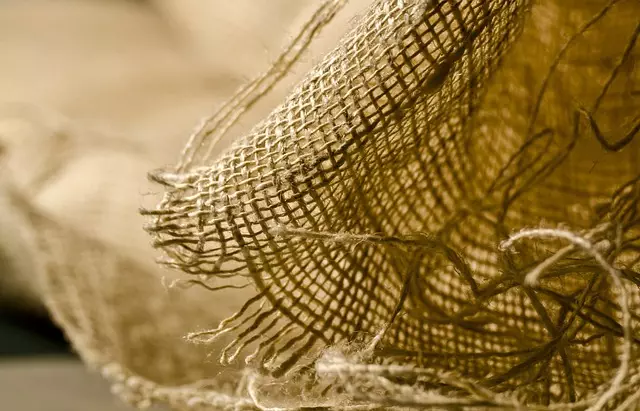Muscle soreness, whether immediate (acute) or delayed-onset (DOMS), is a common post-exercise phenomenon. Kratom, derived from the Mitragyna speciosa plant, has emerged as a potential natural remedy for managing this discomfort due to its pain-relieving and energizing properties, which stem from alkaloids like mitragynine and 7-hydroxymitragynine that interact with opioid receptors. Different kratom strains, such as Bali, Maeng Da, and Thai, have distinct alkaloid profiles that influence their analgesic effects. A comprehensive chart categorizes kratom by leaf vein color—red, green, and white—each with its own characteristics suitable for different types of muscle soreness. Red strains are often favored for pain management and relaxation, green strains for a balanced effect, and white strains for their invigorating qualities that complement pain relief. It's crucial to select the appropriate strain based on individual response, as well as to consult healthcare professionals before use, given the varying legal statuses and potential side effects. Kratom's efficacy should be monitored, with attention to dosage, personal health considerations, and adherence to local laws. Users are encouraged to practice harm reduction strategies, including informed decision-making and monitoring their body's response for safe and effective relief from muscle soreness.
Muscle soreness can be a persistent and uncomfortable companion for many, whether from intense workouts, occupational strain, or everyday activities. Exploring natural remedies, kratom has emerged as a potential aid for alleviating muscle pain due to its unique alkaloid profile. This article delves into the science behind muscle soreness and examines how different types of kratom, as detailed in our comprehensive chart, can offer relief. We will guide you through effective strategies for using kratom, complete with best practices and cautionary notes, ensuring a safe and informed approach to managing your muscle discomfort. Discover how kratom may serve as a valuable addition to your wellness regimen.
- Understanding Muscle Soreness and the Role of Kratom: An Overview
- Navigating the Different Types of Kratom: A Comprehensive Chart for Muscle Soreness Relief
- Effective Strategies for Utilizing Kratom to Alleviate Muscle Soreness: Best Practices and Cautionary Notes
Understanding Muscle Soreness and the Role of Kratom: An Overview

Muscle soreness can manifest in varying intensities and durations, often as a result of strenuous physical activity, injury, or even aging. This discomfort is typically categorized into two types: acute and delayed-onset muscle soreness (DOMS). Acute soreness is the immediate pain experienced post-exercise, while DOMS presents itself 24 to 72 hours after the activity, often due to microtrauma at the cellular level. Understanding these mechanisms is crucial for addressing muscle soreness effectively.
Enter kratom, a botanical substance derived from the leaves of Mitragyna speciosa, which has been traditionally used in Southeast Asia for its pain-relieving and invigorating effects. The different types of kratom, as outlined in various charts available, include strains like Bali, Maeng Da, and Thai, each offering distinct alkaloid profiles that may influence their analgesic properties. Kratom interacts with the body’s opioid receptors, providing relief from pain without the side effects commonly associated with pharmaceutical options. Its efficacy in managing muscle soreness is attributed to its unique alkaloids, such as mitragynine and 7-hydroxymitragynine, which have been studied for their potential pain-relieving benefits. Users often refer to specific kratom strains or dosages that aid in mitigating muscle discomfort, suggesting a personalized approach to managing soreness. However, it is important to approach the use of kratom with caution, as its effects can vary greatly among individuals and regulatory status may differ by region. Always consult with healthcare professionals before integrating kratom into any wellness regimen.
Navigating the Different Types of Kratom: A Comprehensive Chart for Muscle Soreness Relief

When exploring the use of kratom for muscle soreness relief, understanding the different types available is crucial. Kratom, a tropical evergreen tree native to Southeast Asia, contains compounds known as alkaloids that can interact with the body’s opioid receptors, potentially offering pain-relieving effects. The two primary species of kratom are Mitragyna speciosa and Mitragyna hirsuta, each with distinct alkaloid profiles that may influence their efficacy for muscle soreness. To navigate these options effectively, a comprehensive chart can be a valuable resource. This chart categorizes kratom strains based on their color veins—red, green, and white—and their potential effects. For instance, red kratom strains are often associated with pain management and relaxation, making them a popular choice for muscle soreness. Green kratom strains might offer a balanced effect between stimulation and sedation, which could be beneficial depending on the time of day or individual sensitivity. White kratom strains tend to provide more invigorating and energizing effects, which can be useful when dealing with pain that accompanies physical exertion.
When using such a chart, it’s important to consider the specific type of muscle soreness you’re experiencing—whether it’s acute, like post-exercise DOMS (Delayed Onset Muscle Soreness), or chronic, due to underlying conditions. Additionally, the alkaloid content can vary significantly between strains, even within the same color category. For example, Maeng Da kratom is renowned for its high alkaloid concentration, which may enhance its analgesic properties. On the other hand, Bali kratom is known for its calming effects, which might be preferable for addressing soreness that is exacerbated by tension or stress. A comprehensive chart will also include information on dosage, potential side effects, and strain-specific nuances to help users make an informed decision about which type of kratom may be most effective for their specific muscle soreness relief needs. Always consult with a healthcare professional before incorporating kratom into your wellness regimen, as individual responses can vary greatly.
Effective Strategies for Utilizing Kratom to Alleviate Muscle Soreness: Best Practices and Cautionary Notes

When exploring the use of kratom for muscle soreness relief, understanding the various strains and their effects is crucial. Kratom, a plant from Southeast Asia, contains alkaloids that interact with the body’s opioid receptors, potentially offering pain-relieving benefits. The different types of kratom can be categorized into strains such as Maeng Da, Bali, and Thai, each with its own unique profile. A chart comparing these strains can guide users in selecting the appropriate type based on their specific needs for muscle soreness. For instance, Maeng Da is known for its stimulating and painkilling effects, making it a popular choice for those seeking relief from muscle pain without the sedative properties that some other strains might have.
When utilizing kratom for muscle soreness, best practices include starting with a low dose to gauge individual sensitivity, as overconsumption can lead to adverse effects. It’s advisable to consult with a healthcare provider before incorporating kratom into any regimen, especially if you have pre-existing health conditions or are taking other medications. Additionally, the method of consumption—whether it be through capsules, tea, or tinctures—can influence the onset and duration of effects. Regular monitoring of the body’s response to kratom is essential, as individual experiences with muscle soreness relief can vary. Users should also be mindful of the legal status of kratom in their region, as it may be subject to regulations that affect its availability. Safety, dosage, and legality are key considerations when considering kratom as a natural remedy for muscle soreness. Regular users should also practice harm reduction strategies, such as taking breaks from use and staying hydrated to mitigate potential side effects. A balanced approach that includes proper dosing, informed strain selection, and adherence to legal guidelines will help ensure the safe and effective use of kratom for relief from muscle soreness.
Muscle soreness can be a significant hindrance to an active lifestyle, but understanding its mechanisms and exploring natural remedies like kratom offers promising relief options. This article has provided a thorough overview of muscle soreness, delved into the complexities of various kratom types through a detailed chart—a valuable resource for anyone considering this approach—and outlined effective strategies for its use. By adhering to best practices and exercising caution as outlined, individuals can leverage the different types of kratom to alleviate their muscle soreness with greater confidence and efficacy. With these insights, one can navigate the potential benefits of kratom while maintaining a healthy, active routine.






